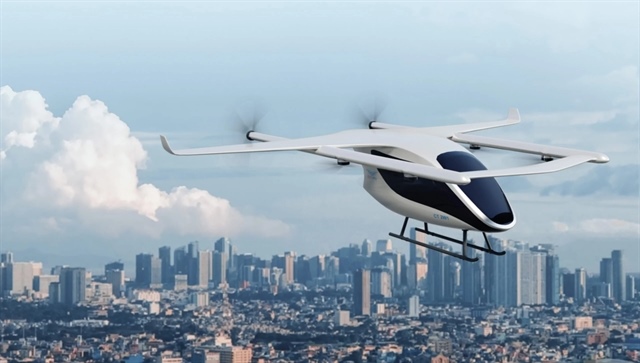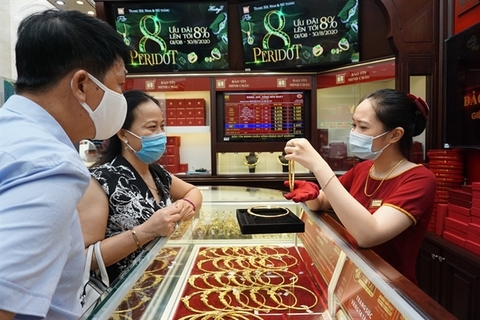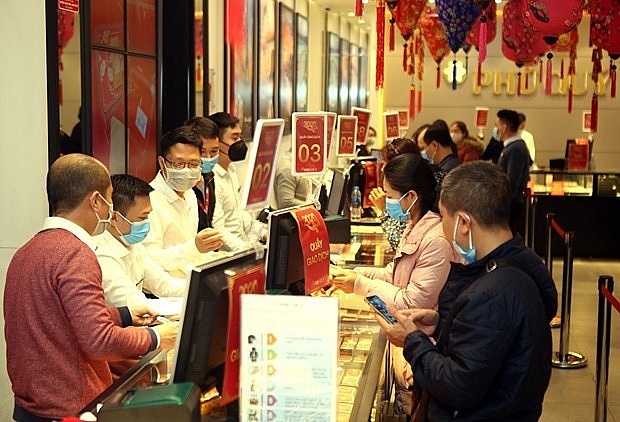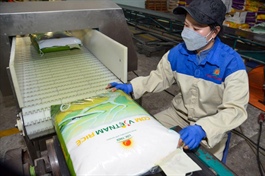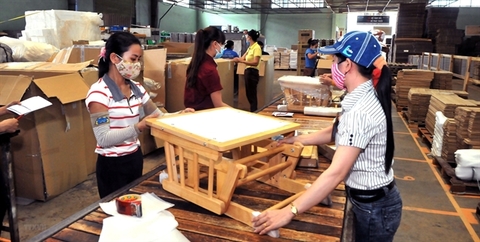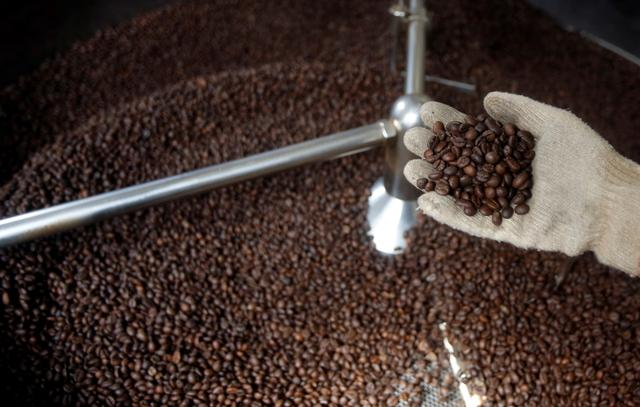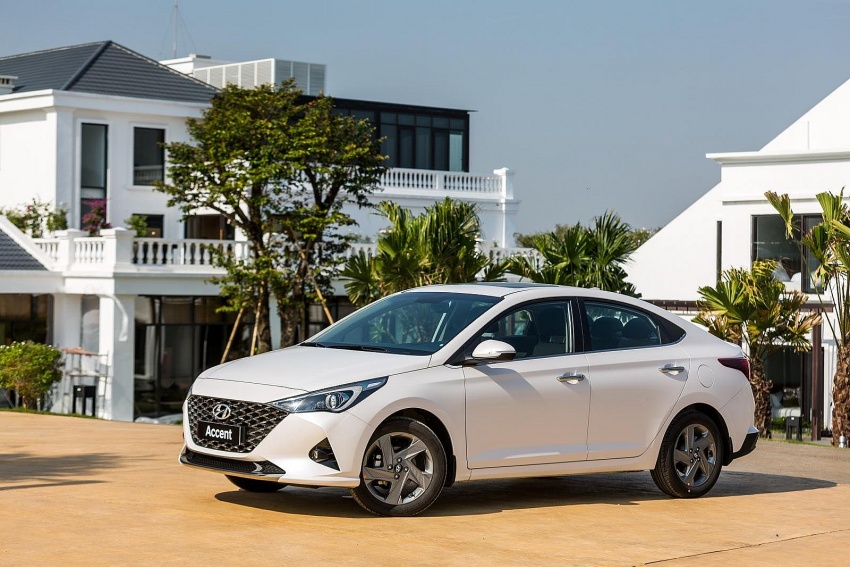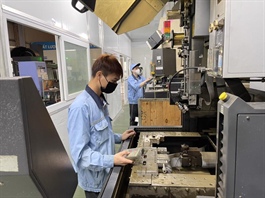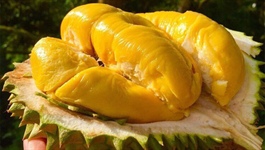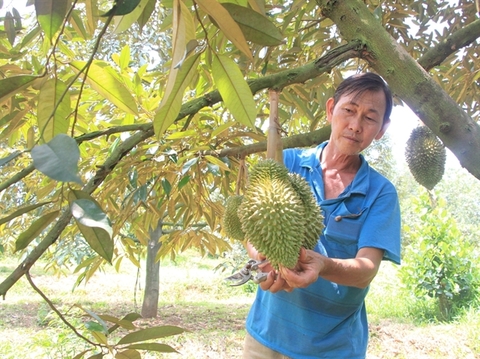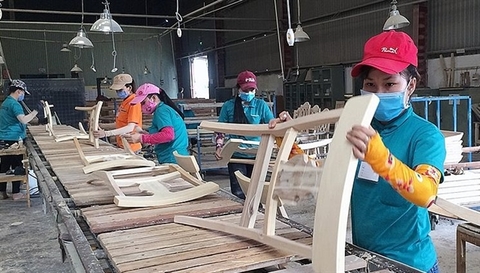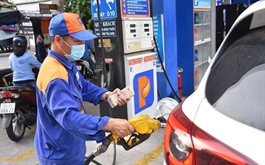Room remains for Vietnamese rice exports to the UK
Room remains for Vietnamese rice exports to the UK
The UK market still has considerable room for Vietnamese rice suppliers to boost exports thanks to the UK-Viet Nam Free Trade Agreement (UKVFTA) tariff quota and the Vietnamese community of more than 100,000 people in the UK, a senior trade official has said.
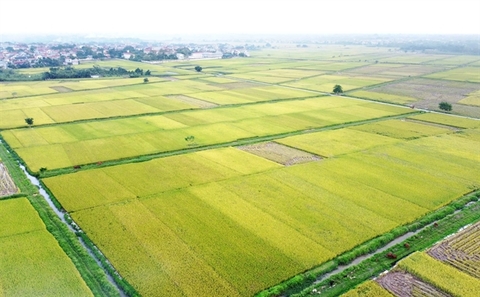
Viet Nam ranks 15th among countries exporting rice to the UK, making up a modest 0.42 per cent of the total import turnover to this country. That means the door is wide open for Vietnamese rice in the market, Nguyen Canh Cuong, trade counsellor at Viet Nam's Embassy to the UK, told Viet Nam News.
The UKVFTA took effect on May 1, 2021, with a preferential tariff quota granted to Viet Nam at a tax rate of zero per cent, enabling UK buyers to have more choices of rice varieties from Viet Nam, Nguyen Van Hieu, Export Director at Loc Troi Group told Viet Nam News.
However, before having experienced a surge in rice purchasing power from the UK market since January 2022, Loc Troi witnessed an eight-month off-peak trading period in 2021 due to the complicated developments of COVID-19. "Since the pandemic is under control, travel between countries becomes easier, and interest in Vietnamese rice grows up, requests for rice supplies from UK’s partners continually knocks on our door," Hieu added.
To further tap into the UK market, Loc Troi would continue to ensure its sustainable rice value chain, with clear planting and residues control procedures to provide high-quality rice products for the UK market, Hieu said, adding that the priority would also be given to expanding the rice planting areas and applying the planting area code and traceability.
Meanwhile, it would still focus on creating favourable conditions for traditional buyers of Loc Troi in the UK to increase their import volumes and teaming up with the Viet Nam Trade Office in the UK to find reputable and capable intermediary partners to bring Loc Troi's rice products into the UK hypermarket system.
"The company will also make the most opportunities to meet new customers at trade fairs and seminars," Hieu told Viet Nam News.
Turning potential into reality
Though untapped potentials exist in this market, to turn them into reality Vietnamese rice growers and exporters need to thoroughly apply Global GAP on a large scale while promoting the production of high-quality fragrant rice, according to Cuong.
He suggested the Crop Production Department, the Plant Protection Department and authorities of provinces with large rice-growing areas implement programmes on supporting farmers in rice varieties, safe agricultural materials, milling and rice storage before exporting.
According to other trade experts, to create a larger market breakthrough and strengthen a sustainable position for Vietnamese rice in the UK and other major markets, the Vietnamese rice industry should implement a branding strategy suitable for each market.
The national brand programme needed to select high-quality and high-yield rice varieties to name them in a simple, easy-to-remember, easy-to-pronounce way along with the place where the rice was grown (Soc Trang Viet Nam rice, for instance) or the name of the creator of that rice variety (like Mr Cua's Rice) to register for brand protection abroad easily.
In 2020, the volume of rice imported into the UK rose 13.5 per cent year-on-year to approximately 763,000 tonnes from 672,000 tonnes in 2019, in which rice shipped from Viet Nam rose to nearly 3,400 tonnes, worth $2.67 million, from 1,300 tonnes, valued at over $1.29 million.
Cuong said Vietnamese rice exports to the market in 2020 saw impressive increases of 116 per cent in volume and 106 per cent in value compared to the previous year.
However, the UK rice imports saw a year-on-year decline of 15 per cent to 652,000 tonnes in 2021. The corresponding import value decreased 8 per cent year-on-year to $574.7 million from about $520.6 million in 2020.
Last year, the rice supply from Southeast Asia also decreased significantly, with rice from Thailand dropping 43 per cent, Myanmar (63 per cent), and Cambodia (51 per cent).
Despite a decline of 20 per cent in rice export volume to the UK, totalling over 2,730 tonnes in 2021, Viet Nam's export value is still up 4 per cent year-on-year to around $2.76 million, thanks to a hike in exported prices.
Among Southeast Asian countries that exported rice to the UK in 2021, Viet Nam enjoyed the highest average unit price at $1,012 per tonne, while that of rice from Thailand, Cambodia and Myanmar stood at $999, $991 and $502 each tonne respectively.
Vietnamese rice in the UK is mainly sold to the Vietnamese community and part of the Chinese, Thai, Malaysian, and Filipino communities. Popular Vietnamese rice brands in the UK include Golden Lotus Premium Jasmine Rice, Longdan Rice, Buffalo Saigon Fragrant Rice and Buffalo Brand Northern Vietnam Glutinous Rice.
According to Cuong, his office has implemented a wide range of activities to promote the Vietnamese rice trade in the UK, including connecting rice importers in the UK with Vietnamese rice exporters, participating in solving administrative procedures for Vietnamese rice exporters and British rice importers, organising six events on promoting some Vietnamese rice products in addition to providing information to domestic enterprises about the demand and tastes of rice consumption in the UK and UK regulations on trademark registration.
Viet Nam is currently one of the five largest rice exporters in the world. The Southeast Asian country shipped 3.52 million tonnes of rice in the first half of 2022, earning revenue of $1.72 billion, up 16.2 per cent in volume and 4.6 per cent in value over the same period last year, according to the Ministry of Agriculture and Rural Development.
The Viet Nam Food Association has forecast that despite the fluctuating import market and strong competition, the country's rice exports are estimated at 6-6.2 million tonnes, equivalent to that in 2020 and 2021, and to earn $3.2 billion in revenue.




